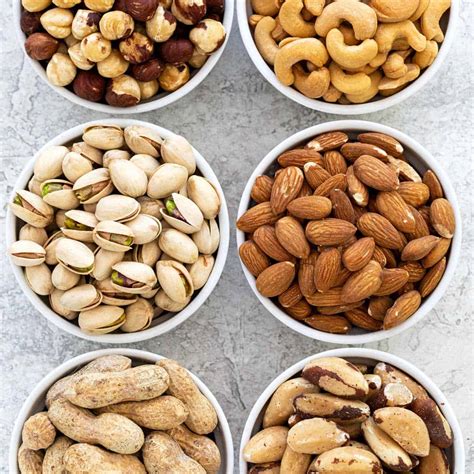Nuts - Nutritional Benefits and Culinary Uses
Nuts FAQ
What is a nut based on?
According to the U.S. Forestry Service, nuts are defined as a “dry single-seeded fruit that has a high oil content. They are usually enclosed in a leathery or solid outer layer.“ Botanists define nuts as a composite of seed and dry fruit found inside of a hard outer shell. Culinarily what we accept as nuts is a bit more broad.
Is a nut a fruit?
A nut is a fruit consisting of a hard or tough nutshell protecting a kernel which is usually edible. In general usage and in a culinary sense, a wide variety of dry seeds are called nuts, but in a botanical context "nut" implies that the shell does not open to release the seed ( indehiscent ).
What is a true nut?
True nuts are produced, for example, by some plant families of the order Fagales. These include beech ( Fagus ), chestnut ( Castanea ), oak ( Quercus ), stone-oak ( Lithocarpus) and tanoak ( Notholithocarpus) in the family Fagaceae, as well as hazel, filbert ( Corylus) and hornbeam ( Carpinus) in the family Betulaceae .
What are the different types of nuts?
Some types of nuts include almonds, pistachios, and walnuts. Nuts are a delicious snack that are crunchy and nutritious. There are many benefits of eating nuts, such as supporting healthy body weight and helping to reduce your risk of certain health conditions like heart disease. Nuts have various textures, flavors, and nutrient profiles.
Are nuts unhealthy?
You might think of nuts as unhealthy because of their fat content, but that’s not the whole picture. Nuts are a nutrient-rich food providing us with fibre, protein, vitamins, minerals and other micronutrients that could help reduce our risk of heart and circulatory diseases.
Are peanuts nuts?
Peanuts, for example, have more than one seed and technically are the seed of a legume. So they aren’t actually nuts, but we use them like they are. In addition to peanuts, we will take a look at 59 different kinds of nuts from A to Z!
Nuts References
If you want to know more about Nuts, consider exploring links below:
What Is Nuts
- https://en.wikipedia.org/wiki/Nut_(fruit)
- https://www.bhf.org.uk/informationsupport/heart-matters-magazine/nutrition/are-nuts-good-for-you
- https://www.healthline.com/nutrition/9-healthy-nuts
- https://www.eatingwell.com/article/8027688/are-nuts-good-for-you/
- https://www.liveeatlearn.com/types-of-nuts/
- https://www.nutritionadvance.com/types-of-nuts-complete-guide/
- https://www.thespruceeats.com/what-are-nuts-1328632
- https://www.health.harvard.edu/nutrition/quick-start-guide-to-nuts-and-seeds
- https://health.clevelandclinic.org/benefits-of-nuts
Nuts Information
Explore Related Topics
The Antioxidant Power Against Asthma: Myth or Reality?
Examining the role of antioxidants in defending against asthma. Is there significant evidence to support the use of antioxidant supplements for asthma, or is it just a myth?
